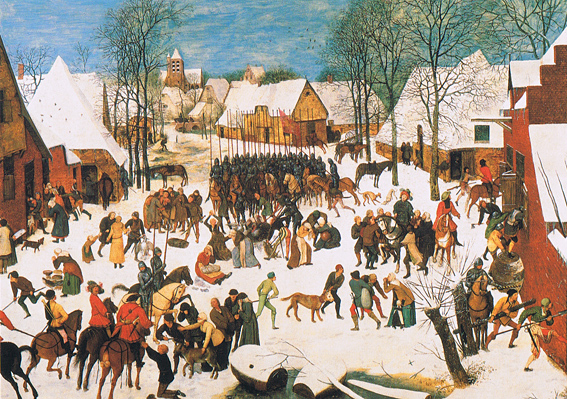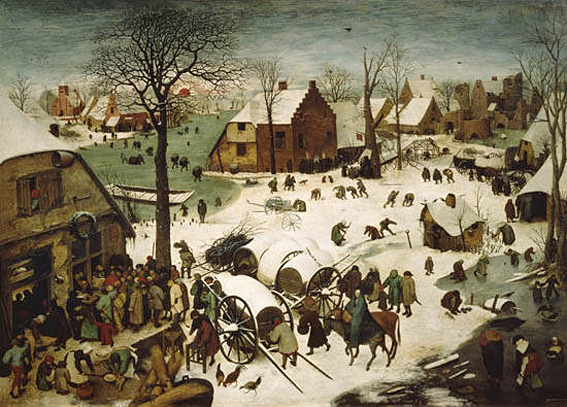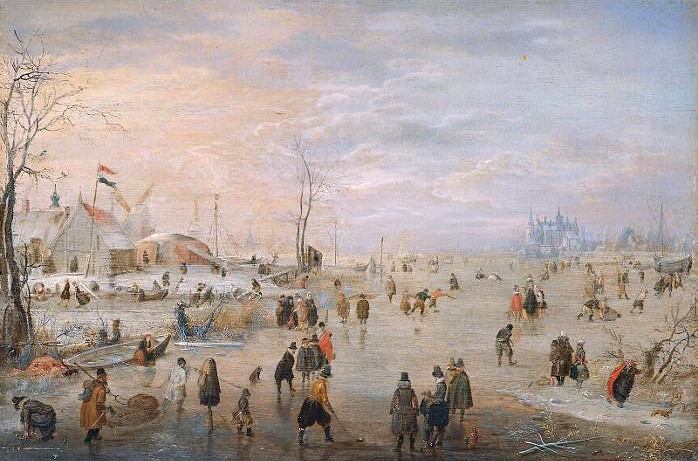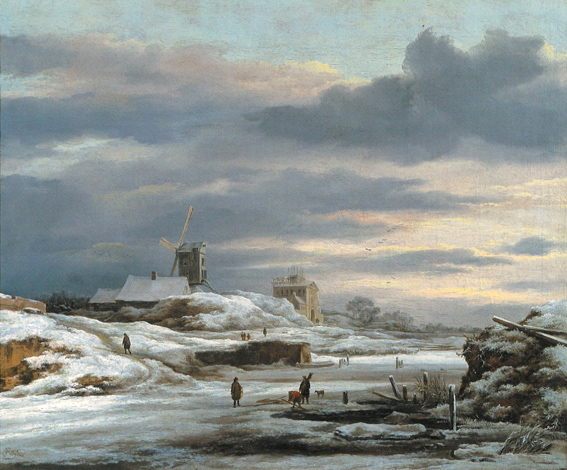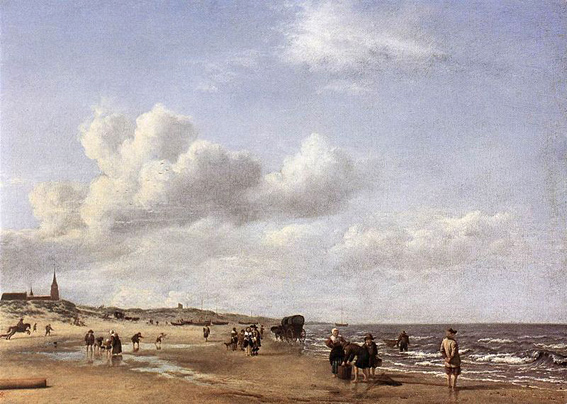DUTCH LANDSCAPES
December 17th, 2008 adminIt was Sarah’s birthday yesterday and we spent the day in London taking in a couple of exhibitions, the Byzantium 330-1453 at Royal Academy and Bruegel to Rubens – Masters of Flemish Painting at The Queen’s Gallery, Buckingham Palace.
‘Bruegel to Rubens’ is the first exhibition mounted of Flemish paintings in the Royal Collection, bringing together 51 works from the 15th to 17th centuries, including masterpieces by Hans Memling, Jan Brueghel, Van Dyck and Rubens. For me, the most impressive painting in the exhibition was Massacre of the Innocents (1565-7) by Pieter Bruegel the Elder, which was acquired by Charles II. On first sight the painting appears to be a scene of a Flemish village under snow, but recent infrared images reveal that it in fact depicts the biblical story of the Massacre of the Innocents, when according to the gospels, King Herod, after hearing of the birth of the King of the Jews, ordered that all children under the age of two should be murdered.
Massacre of the Innocents, Pieter Bruegel the Elder, 1565-7
You can listen to an audio commentary about the painting here.
The subjects of religion and classical antiquity were frequently represented in Bruegel’s paintings. However, they were often depicted completely integrated into the pastoral life, as in the example of his painting ‘The Census at Bethlehem’.
The Census at Bethlehem, Pieter Bruegel the Elder, 1566
For this painting, Bruegel has selected an afternoon in winter, with the red sun already touching the horizon and the square full of people despite the cold. Living conditions in the 16th century were very cramped with all the members of a household often housed together in one room. For these reason, people spent more time on the streets and in the village square than in their houses. Children are enjoying themselves on the ice. A heavily pregnant Mary is on the donkey being led by Joseph past a tavern where crowds are gathered on the bottom left of the picture. The main area of the painting is filled with people enjoying themselves, dancing, drinking, paying marbles or practising archery. At the bottom edge of the picture, a man in fool’s costume is leading two children by the hand. It’s said that by including this figure, Bruegel is seeking to tell the observer that he is not only endeavouring to entertain with his portrayal of people enjoying themselves (in this instance at a religious festival) but also wishes to admonish him: Foolishness leads people astray.
Many Flemish and Dutch artists around this time incorporated everyday milieu into their pictures, painting not only rich and important men but also nameless people – the peasants, the agricultural workers, their dwellings and villages. In relationship to my own work, We English is not just a social or cultural commentary although there are elements of this in the work; more, it aims to constitute a sensitive, resolved response to scenes of ordinary people in their chosen environments. And my photographic approach to the project was certainly partly inspired by some of these 16th and 17th century landscape painters.
Enjoying the ice, Hendrick Avercamp, 1630-34
Painters like Hendrick Averamp who depicted winter scenes teeming with life: skaters, men working, children playing, women walking, an entire town engaged in various activities on the ice (above and see my previous post on his work). These vibrant scenes capture people at leisure in a manner that reveals much about daily life but is executed with a transformative vivacity and narrative energy that makes it much more than an anthropological study.
Winter scene with mill, Jacob van Ruisdael, private collection
The work of artists such as Van Ruisdael were executed in a way that also informed my aesthetic gaze. I admire the muted tones of colour, the deceptive flatness of a scene, the way in which individual figures are both dwarfed by and are vital to the landscape around them; even Ruisdael’s preoccupation with local landscape formations, such as dunescapes, must have created for his viewers a sense of recognition and shared regional history. It seems that Ruisdael’s romantic sensibility is successfully assimilated into realistic, recognisable landscapes and this was my intended way of working too.
The beach at Scheveningen, Adriaen van de Velde, 1658
I’m also drawn to Van de Velde’s The Beach at Scheveningen, with its huge skies and opaque stretches of water; a scene full of detail that belies its initial simplicity. During the seventeenth century artists increasingly depicted the sea and beaches along the Dutch coast as places of contemporary life, embodying the national identity of the young Republic. They appear to capture daily life rather than record great events.
As the exhibition catalogue from a previous show (From Russia) at the Royal Academy, identified-
“Art feeds on art and this exhibition demonstrates that all artists draw on the work of their immediate and recent contemporaries or on the art of the past to fine new solutions to creative expression.”


